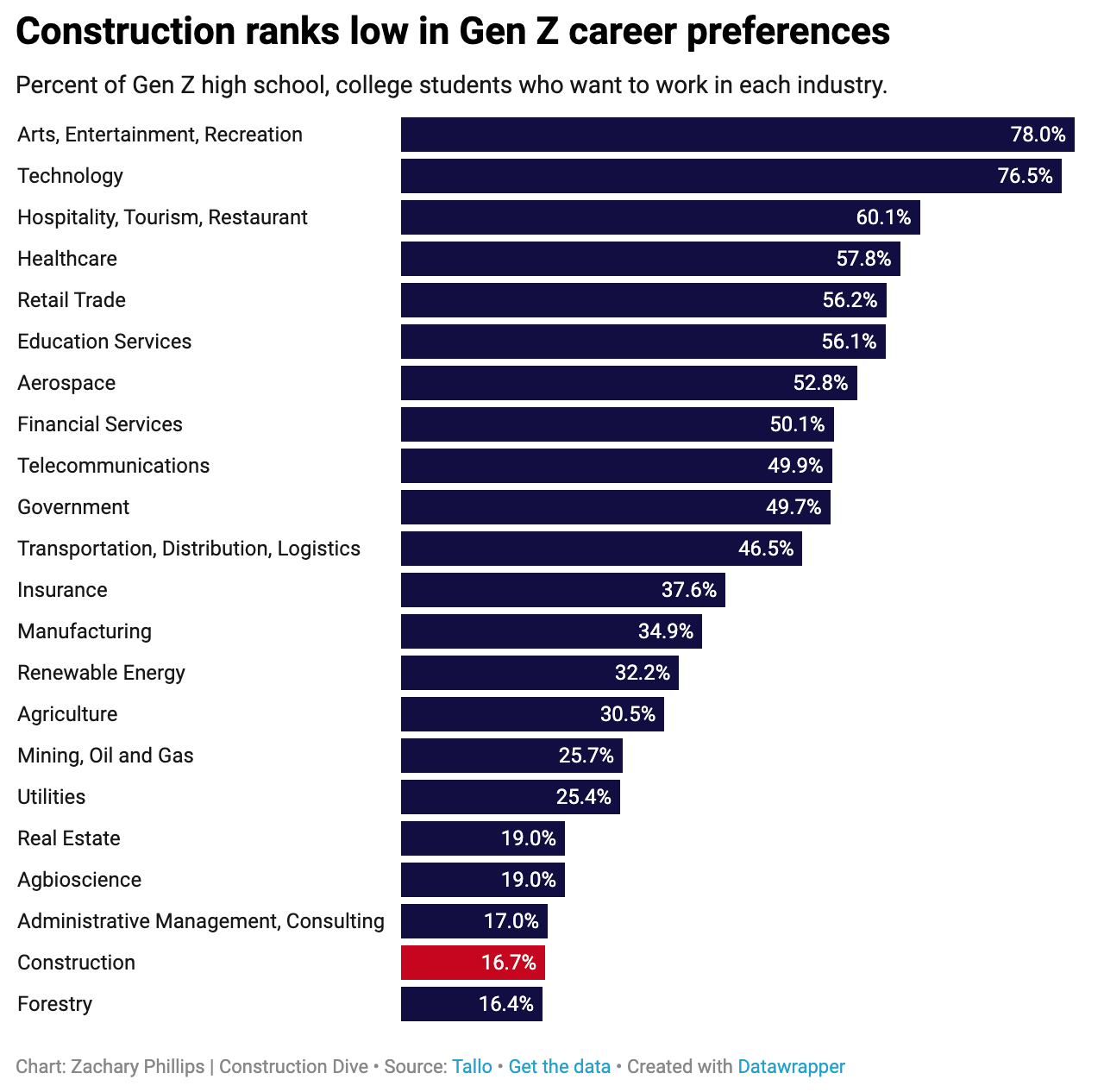
The Great Resignation affects construction too
It's not a buzzphrase anymore, which is good and bad news for the industry
July 29, 2022
8 min read
Industry News

Caleb Taylor
Founder at Buildr

Something funny happened during the pandemic (you know, besides Bo Burnham dropping his special Inside on Netflix). People from all industries began quitting their jobs en masse, which was starkly different from the feelings at the very beginning of the pandemic when exiting a job would've been about the riskiest decision imaginable.
The U.S. Bureau of Labor reports that in 2021, an average of 4.34 million people quit their job in the United States in just the last four months. They took extended breaks, went on vacation, maybe took on several, less time intensive side hustles rather than one big main hustle.
It wasn't until we understood the effects and implications of Covid-19 more and saw the light at the end of the tunnel (well, we're technically still in the midst of it. The tunnel is very long but it's very well lit now? You know what I mean), that US workers collectively realized a few things:
Life is vulnerable and fleeting.
Time with loved ones is important.
Many, many jobs can be done just as well remotely.
I am very valuable and most any job will give me the flexibility and benefits I desire if I look hard enough.
Construction was obviously no stranger to the Great Resignation. Let's get into the effects.
The Great Resignation in 2022
All the solitude of the early pandemic provoked lots of introspection and some reevaluations happened: "Life is short, why should I be the slightest bit unhappy?"
People exposed to a sudden relaxed work-life balance opened the Pandora's Box of a better lifestyle becoming a necessity, especially when restrictions lifted and people returned to full-time slogs and mind-numbing commutes. Will Smith may have said it best in several of his films: "Aww, hell no."
It’s no secret that Covid-19 created a surge of forced remote work. Many industries recognized that working remotely is just as effective as in-office. Silicon Valley has become a ghost town, as remote workers have flocked to cheaper places to live while companies like Twitter have declared on staying forever remote.
Workers are switching career paths, looking for jobs with better benefits, and trying to create more work-life balance. This is especially true for the younger generation entering the workforce. Gen Z will not settle for an undesirable work-life balance which is in part why their targeted industries are the most flexible (construction is very low on their list, but we'll get into that).
In short, the Great Resignation wasn't a singular moment as much as the dawn of a new age; an enlightening. We may never go back to the old way again.
The Great Resignation's impact on the construction industry
The construction industry is in crisis due to flocks of resignations, an older median-aged workforce that will mostly retire in the next 8 or so years, and a complete lack of enthusiasm from the incoming workforce to seek construction jobs.
For general contractors not actively seeking to hire younger talent, they will quite literally become extinct sooner than later.
Forbes reports that there were 197,250 construction employees that quit their jobs per month in the final four months of 2021. To put it into perspective that means that, “For every 100 construction workers that were working, three construction workers were quitting.”
Construction Dive claims that “Skilled trade companies are desperate for talent.”
What does desperation cause? If you work in or have a friend in HR at a construction company you already know: less talented staff are hired. This only adds to the skilled worker shortage in construction.
There are multiple factors that have been a catalyst to the Great Resignation in the construction industry. For one, the median age for a construction worker is 41, adding even more urgency to hiring replacements.
The older processes for construction management might be presented as a more “It’s all in my head” approach, coupled with Excel spreadsheets. While these methods worked when employees were staying at the same company for 30 years, the Great Resignation creates a learning curve for onboarding and overall internal communication.
The statistics speak for themselves. If your company is not already affected by the Great Resignation, there’s a chance your company could still lose employees to retirement or other competitors with more appealing benefits.
Another factor impacting construction is a general lack of interest. A report conducted by Tallo asking where Gen Z wants to work reveals a dim future. The report is divided by interest in specific companies and industries.
Out of 22 industries listed, Arts/Entertainment/Recreation had 78% of Gen Z interest listed at number one, and construction had 16.7% interest listed at 21. These numbers might be the result of a push for remote work (construction obviously entails lots of hands-on, in-person work), but still provide valuable information about what changes might need to be made for employee retention and hiring.

gen
The future of construction
The old methodology of “It’s all in my head” are fading when it comes to business development processes. This is in part because it's very likely that the noggin in question that "it" is "all in," is likelier than ever to move on to greener, more work-life balance-friendly pastures. Or retire entirely.
One major part of employee retention and hiring is internal communication and bulletproof processes that are used in each department for consistency. Instead of outdated processes involving Excel spreadsheets, companies should be seeking software solutions that lets them accomplish duties at scale with less workers and less, still, coming on the horizon.
Although the Great Resignation might create a looming lack of hiring the next generation, there are processes and technology that can outlast employees if implemented properly.
When efficient and collaborative platforms like a CRM are used to their full potentials within a company, the exit rate of employees can decrease because of company unity and transparency. More importantly, these processes will outlast a workforce that is statistically bound to have turnover.
Keep in mind that new processes and technology will always have a learning curve that will involve a lot of questions, and potentially some errors. This is completely normal especially when hiring new employees. However, if the same processes are used consistently and well, then internal communication is going to help employees feel “in the know” of the industry and feel valued. This is also why adopting technology that is both construction-specific and easy and intuitive should be valued more than it is. It's why we designed Buildr the way that it is.
Free Trial of Buildr CRM
Between the Great Resignation, looming retirement of many construction employees and low interest in the younger generation, it makes more sense than ever to switch to more modern processes.
Other resources to help with retention
The construction industry workforce is in the crosshairs, which is why our blog has had such a focus lately on strategizing to defend against departures. Workplace toxicity is a noble thing to quell, so read the 7 things to keep an eye out for to make sure your company is doing the most to retain its employees. Good strategies for teamwork is also paramount to retention. Lastly, here are some tips for developing a strong reputation internally.
When the work is fulfilling enough, the work and life in "work-life balance" doesn't need to be akin to oil and water like it has been lately.
Stay in the loop
Seriously, you should sign up to be a construction insider. Everyone will be so jealous of you.